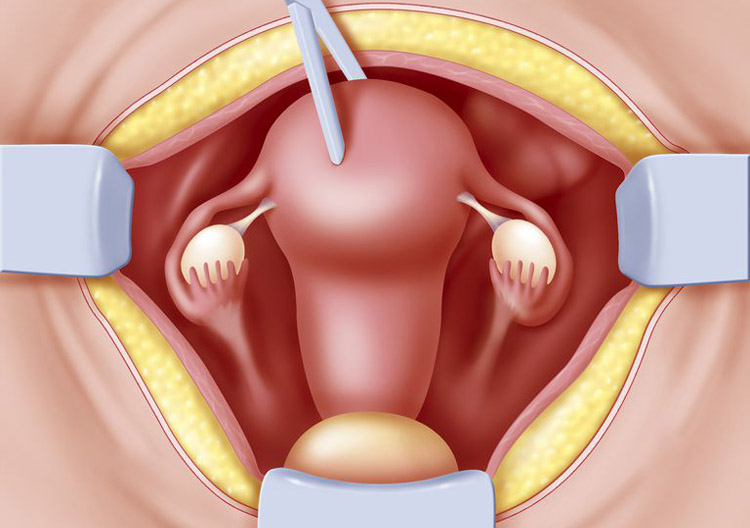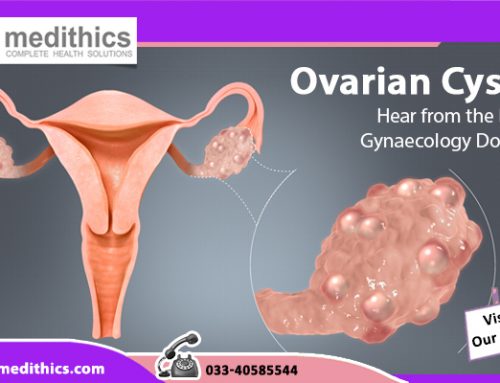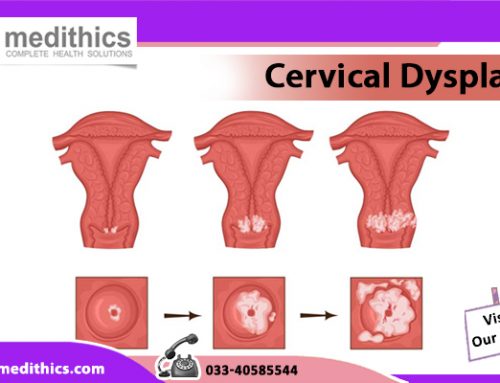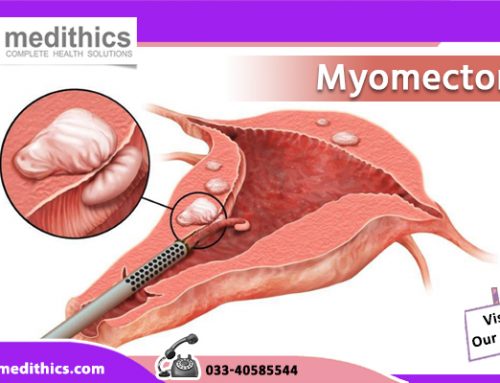Abdominal Hysterectomy involves surgical removal of the uterus. The surgical procedure is of two types, partial Hysterectomy that removes only the uterus and total Hysterectomy that eliminates the uterus and the cervix, which is the lower portion of the uterus. Vaginal Hysterectomy procedure requires 60-90 minutes, while laparoscopic Hysterectomy surgery takes 70 to 110 minutes.
Overview
Abdominal Hysterectomy surgery is often performed on the advice of the top gynaecologist in Kolkata when a woman is suffering from any of these – abnormal uterine bleeding, cervical abnormalities, fibroids, pelvic organ prolapse, severe bleeding post childbirth and chronic pelvic pain. The surgical procedure involves removing the uterus through small incisions created in the lower abdomen.
There are two types of Abdominal Hysterectomy (AH) that include partial hysterectomy and total hysterectomy. The former surgical procedure involves removal of the uterus, while keeping the cervix intact; the latter procedure includes total removal of the uterus along with the cervix.
Hysterectomy surgeries are divided into two parts, vaginal hysterectomy that requires 60 to 90 minutes, while laparoscopic hysterectomy takes more time about 70 to 110 minutes. Patients are given spinal or general anaesthesia along with sedation before the procedure starts.
If the patient has tumour in her uterus and other reproductive organs, then she needs an Abdominal Hysterectomy surgery. In other cases of immense bleeding, pain and infection in the uterus and its adjacent areas, the AH surgery is highly recommended by the best gynaecologist. Before a patient undergoes Abdominal Hysterectomy surgery, there are certain preparations to be taken. Read to know what they are:
Before the Treatment
Hysterectomy surgery requires hospitalization for a few days, no matter whichever type of abdominal hysterectomy procedure is performed. The preparations before abdominal hysterectomy surgery involve the following:
- Patients have to go through urine and blood tests, and a thorough pelvic examination.
- A meeting with the anaesthesiologist before the operation is necessary for the patient and her family to learn and understand about the types of anaesthesia that will be administered (local or general) at the time of operation.
- Patients should discuss with the surgeon regarding the procedure and pre-surgery obligations.
- Patients are also asked to stop smoking 2-6 weeks prior to the surgery. Smoking is injurious to health and it may cause severe breathing problem at the time of surgery. Besides, it tends to slow down your healing post surgery.
- The patient or the patient’s family has to read through the informed consent that explains the tests, procedures and treatments with regards to the surgery. Before a patient undergoes the surgery, she has to understand every detail of her medical care.
- She is required to undergo blood tests to help doctors assess how her body is functioning. In addition, she has to take antibiotics to prevent infection during and after the surgery. Sometimes, doctors may instruct blood thinning medicines for patients before the surgery. Other than this, pain relievers are given in the week of the surgery before the patient goes through the operation. In most cases, acetaminophen is advised over aspirin, or naproxen or ibuprofen to minimize risk of profuse bleeding at the time of surgery.
- No food or drink can be taken from the midnight to the day of the surgery. Sometimes, an enema or laxative is prescribed to the patient to empty the bowels prior the surgery.
How it is performed?
If you undergo partial Abdominal Hysterectomy surgery, the gynaecological surgeon makes a small incision in your abdomen after you have been administered general anaesthesia. The cut is done from the belly button to downwards across your lower abdomen.
Otherwise, in some cases surgeons make cuts across the lower abdomen, just below the belly button. Whichever incision technique he follows, he ultimately cuts through the tissues and fats to reach the uterus. Then, is the most important part in which the uterus and the cervix (lower portion of the uterus) are separated from the upper portion of the vagina. Special instruments are used to remove the uterus carefully from the body.
On the other hand, total Abdominal Hysterectomy is slightly different from partial hysterectomy. In this case, both the uterus and the cervix are removed. During the procedure, surgeons cut the lower abdomen of the patient either horizontally or vertically, which depends upon the reasons of the surgery. Generally, large uterine fibroids are removed through total Abdominal Hysterectomy.
It should, however, be noted that both partial and total Abdominal Hysterectomy procedures are not performed on women who want to be pregnant in the future. In serious cases of cancer, the uterus along with the cervix and other adjoining organs are all removed for patients’ safety.
Recovery
After the patient regains consciousness post surgery, she feels tired or a slight amount of pain in the lower abdomen, which depends upon the type of hysterectomy that has been performed. Most likely, she is put on a urinary catherter and a drip.
After a day or two, she is asked to walk around the hospital zone to prevent blood clotting in the leg. From the third day, the patient is able to walk freely without any pain. Those women who under vaginal hysterectomy are discharged in three to four days of the surgery, whereas the recovery time of Abdominal Hysterectomy surgery is a little more about five to seven days.
Complete recovery takes place after 6-8 weeks have passed. During this period, the patient is suggested to avoid heavy lifting or physically challenging activities. A follow-up appointment with the gynaecologist is mostly recommended after six weeks of the operation.






Leave A Comment
You must be logged in to post a comment.